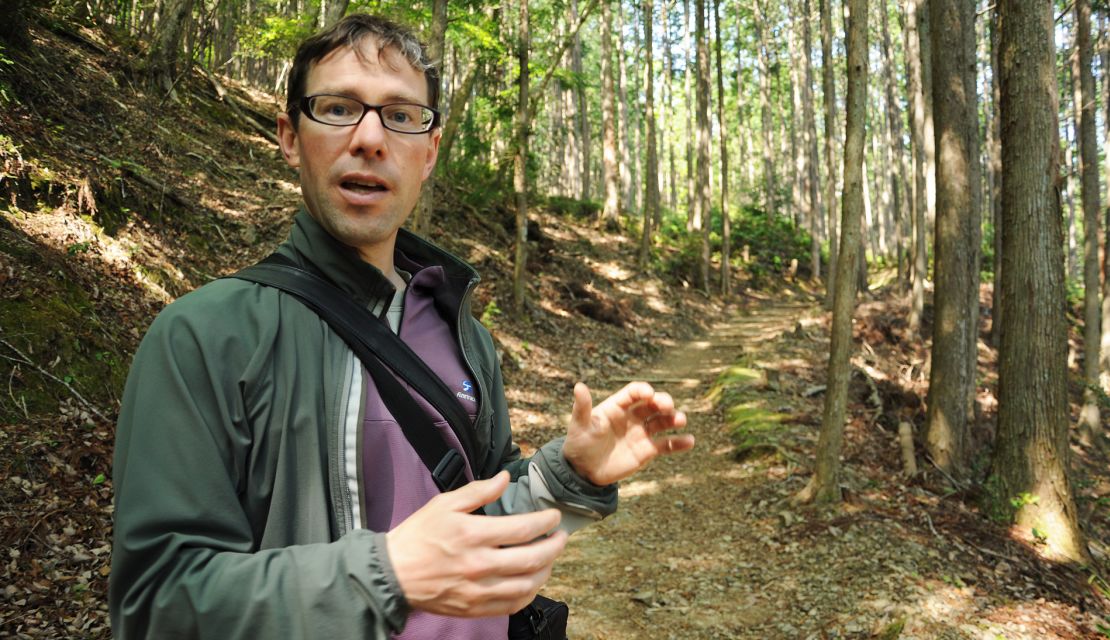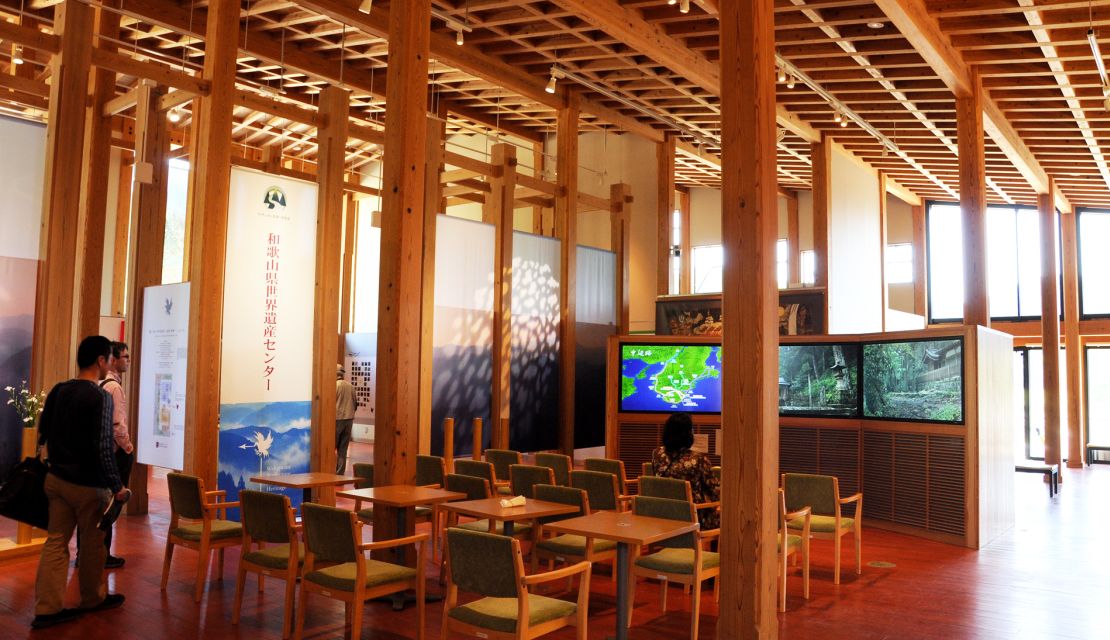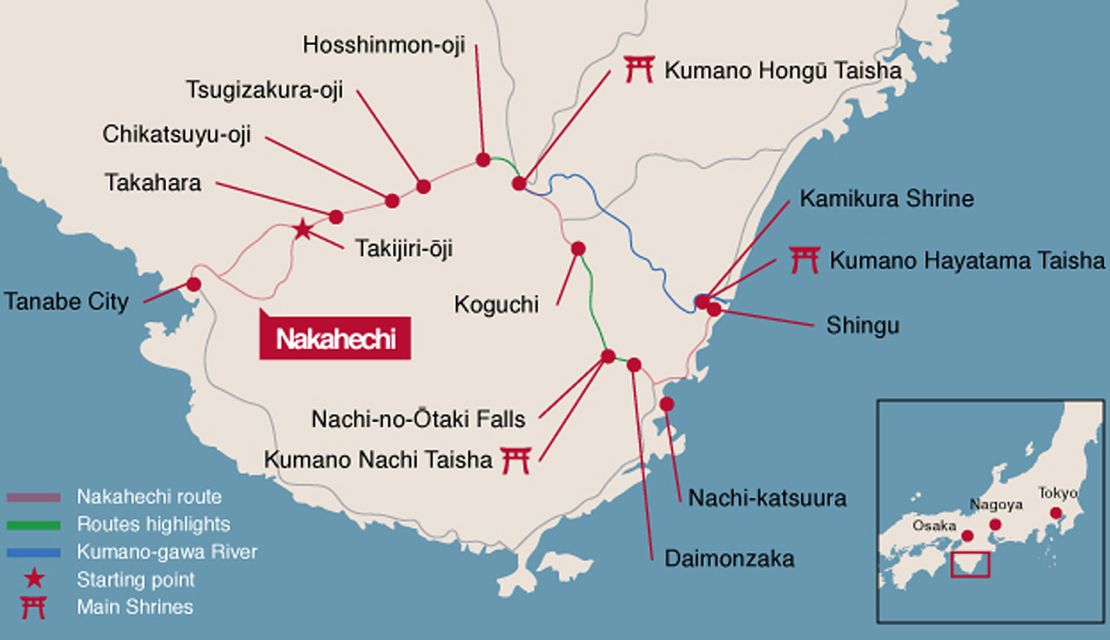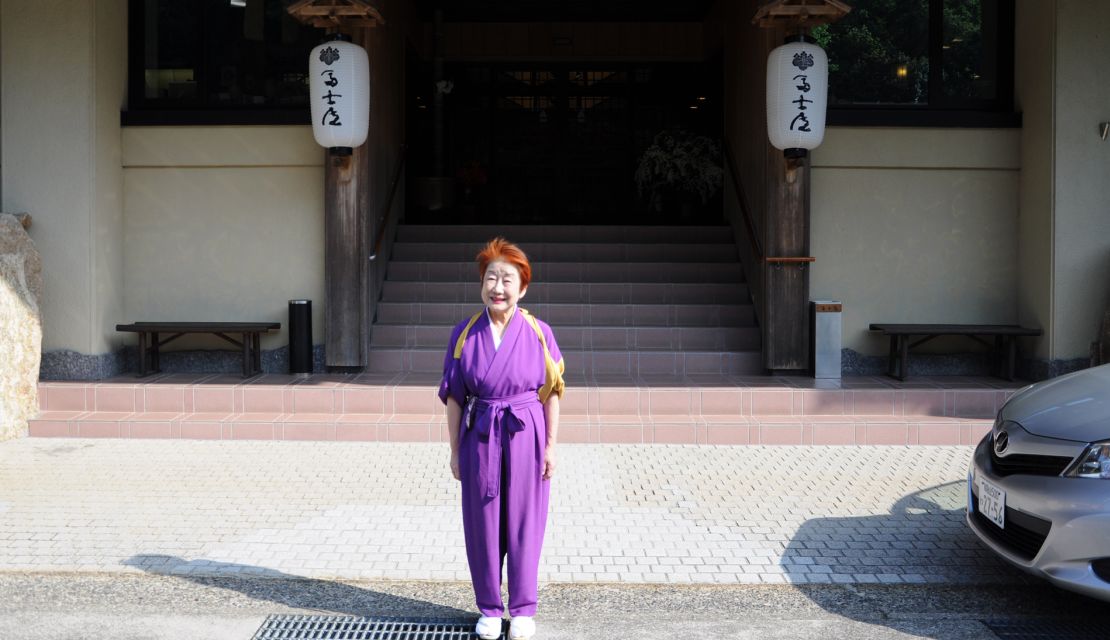As in most of Japan, 2011 was a difficult year for tourism in Tanabe City in Wakayama Prefecture. Prospects for the city’s already-quiet tourism industry were looking bleak.
The entire nation had been rocked on March 11 by a 9.0 magnitude earthquake and subsequent tsunami, then government-mandated evacuations around the Fukushima Daiichi nuclear power plants.
Between March and April of 2011, leisure inbound tourist arrivals are estimated to have dropped 90% across Japan. Then, just as Tanabe was regrouping for the fall tourist season, a major typhoon hit the region in September. Floods and landslides destroyed roads, houses, rail lines and the city’s newly built heritage center.
“It was devastating,” says Brad Towle, international tourism promotion and development director for the Tanabe City Kumano Tourism Bureau.
Magic model

Yet from these calamities an unexpected outcome emerged, one that affirmed that a unique model of tourism development recently introduced in Tanabe was working.
“All tours to the area were canceled except those from our local reservation system,” says Towle. “Travel agencies had given up on our community, but because we had created our own community systems, we were stronger and could control our destiny.
“Because of the strength of these local relationships and grassroots systems, our city recovered much quicker than those around us.”
How dramatic was that turnaround?
Consider that the tourism office’s revenue estimate was JPY30,000,000 ($250,000) before the 2011 tourism year started. Naturally, with the disasters that followed, the team was unsure if it could reach that figure – but in fact revenue reached in excess of JPY40,000,000 ($330,000).
By the time the 2014 to 2015 fiscal year rolled around, it was raking in in JPY146,000,000 ($1,200,000).
Those “grassroots systems” refer to a groundbreaking community-based tourism model developed in part by Towle, in which “community members are actively involved in the entire (tourism development) process,” from creating a tourism vision, implementing booking systems, improving infrastructure, even creating branding, marketing and sales initiatives, according to the tourism officer.
Originally from a small town in Manitoba, Canada, Towle has lived in Japan on and off since 1999. He became a founding member of the Tanabe City Kumano Tourism Bureau in 2006.
Sizing up the challenges of promoting tourism in a small, relatively un-publicized area – about 80,000 people live in the larger Tanabe City area – Towle went to work to create a local reservations system and overcome language barriers.
MORE: World’s best unknown hike? Japan’s Kumano Kodo
Since many of the family-run businesses in the area had neither the means to market their services nor the ability to speak foreign languages, it had been difficult for travelers, especially international travelers, to research the area or make reservations.
After consulting the community, an online website in Japanese, Chinese, Korean, English, French and Spanish was built. A Japanese/English booking system was also created, making it easier for travelers to book services directly with individual businesses.
The result was the most thorough guide to the area ever published and a platform to promote local services.
“Every business can be a member,” says Towle. “By packing all local businesses into one site, profits go back to Tanabe instead of to travel agencies in big cities.”
‘Nothing else like it.’

In order to serve as a middleman between travelers and businesses, the tourism office had to be registered as a travel agency. This required immense amounts of funding, paperwork and lobbying.
“Japan has been ruled by large, powerful travel agencies for so long,” says Towle. “Nobody could visualize this kind of tourism model and that it could actually be effective.
“There’s nothing else like it in Japan.”
Hundreds of hours were spent meeting with local businesses to hammer out agreements around plans, prices and commissions.
“We traveled to accommodations, took pictures and registered information almost day and night for many months on end,” says Towle.
“It was the first time for a community in Japan to start their own travel agency and reservation system for both domestic and international travelers.”
READ: 10 things that make Wakayama Japan’s best kept secret
Global recognition
It took three years to work through all the paperwork and registration for the travel agency license.
In 2012, less than two years after the system was launched, Tanabe City was named a finalist for a Tourism for Tomorrow Award by the World Travel & Tourism Council.
The award celebrates innovation in travel and tourism. Delegations from around Japan began visiting Tanabe to study its tourism model.
In 2015, the Tanabe tourism office was long-listed for a World Responsible Tourism Award.

Building local confidence
A major responsibility of Tanabe’s bureau is to preserve and promote Kumano Kodo, a series of scenic pilgrimage routes sprawling within and beyond the city.
Declared a UNESCO World Heritage Site in 2004, it’s one of only two pilgrimages in the world to have attained such status. (The other is Camino de Santiago in Spain.)
As part this effort, Towle’s team educates tourists on the importance of respecting heritage in the region.
They’ve revamped signage and built new visitor centers catering to Japanese and overseas pilgrims.
New toilets and teahouses built along popular routes are run by locals.
In the city center, menus have been translated into English.
A map has been published to help travelers weave through maze-like food alleys.
“Level-up” workshops and discussions help residents learn skills for improved cultural communication.

Matsumoto Seiko volunteers at a teahouse along one route.
She also leads tours around Hongu Shrine.
“When I was younger, I was working in Osaka,” says Matsumoto. “My accent from the countryside made me very self-conscious and shy, but since my hometown has been registered as a UNESCO World Heritage Site, I’m so proud to introduce it to others.”
An elderly couple who own a guesthouse were initially nervous about hosting non-Japanese-speakers.
After training, they became receptive to overseas visitors – now, more than 50% of their guests are non-Japanese, according to Towle.
MORE: The Japanese inn that claims to make you beautiful
Happy locals make happy tourists

Towle believes community involvement gives locals tools to control their own future.
“The community’s input shapes the way tourism affects them and their community, giving power back to the people,” he says.
Rather than seeking simply to boost tourist arrivals, Tanabe City places its emphasis on attracting responsible tourists.
“Numbers are important, but not everything,” says Towle. “Numbers can be deceiving and manipulated.”

“We didn’t focus on the number of tourists at first, but rather went beyond this to see how satisfied our guests were as a way of rating of our progress.
“We also looked at the number of people to the actual time and money they spent – fewer people spending more time and money is better for us and our infrastructure than a large number of people in the area spending less time and money.
“It’s important to look beyond the numbers, to see the actual quality of life of the locals.
“If the locals aren’t happy, then our community won’t succeed or survive.
“If there’s a good atmosphere, this can be felt by visitors.”










